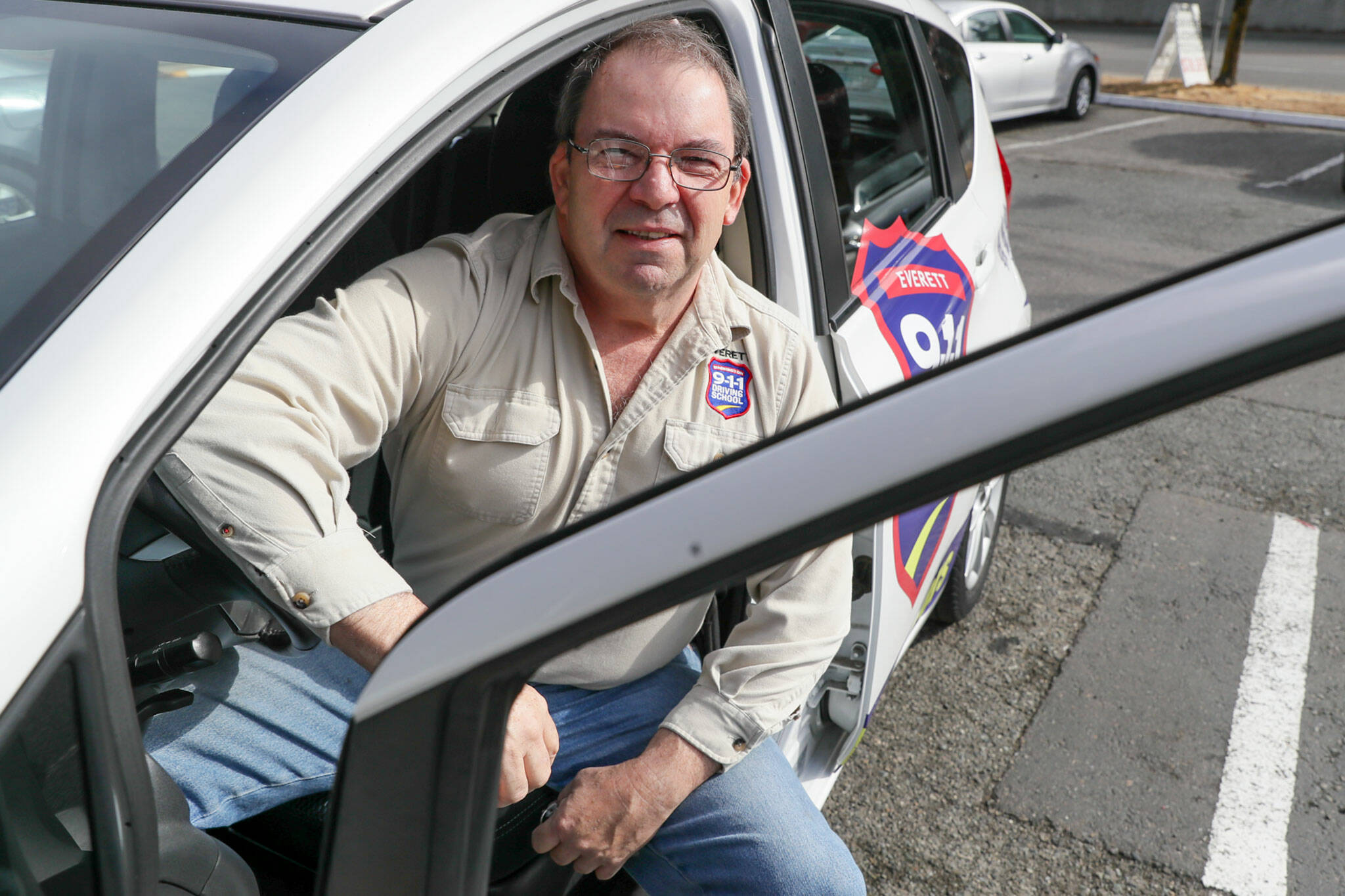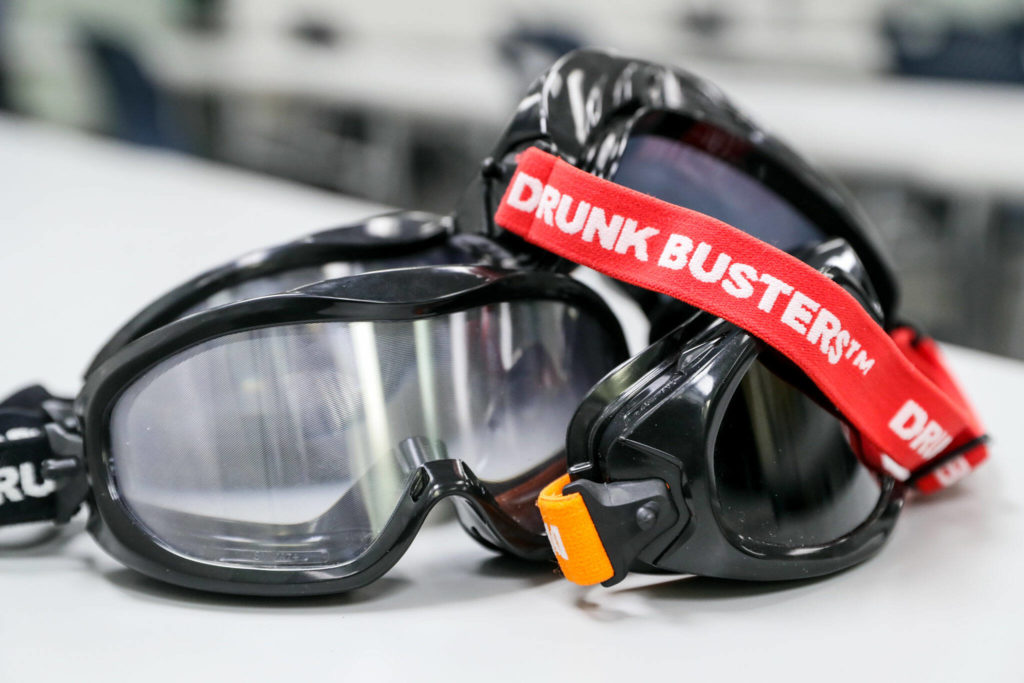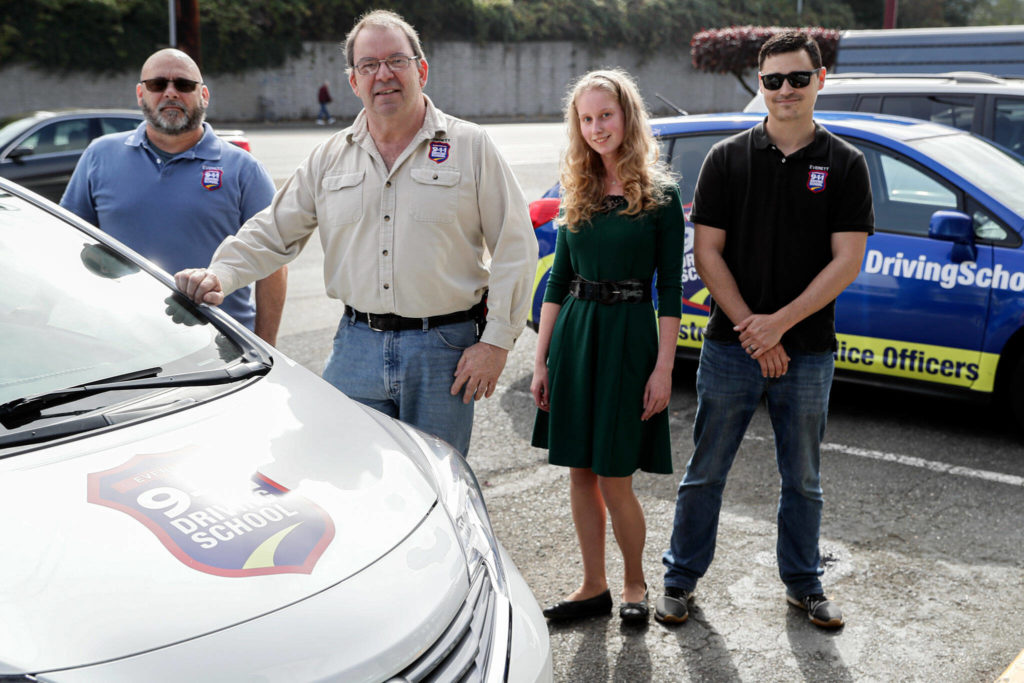EVERETT — Self-driving cars won’t eliminate the need to learn to drive any time soon, most experts say.
But a bump in the number of backseat drivers? Now, that’s a possibility and there’s plenty of those.
“Chances of a completely self-driven car hitting the market is unlikely in the next two decades,” according to 911 Driving School, which operates franchises in Washington, Colorado and three other U.S. states.
That’s job security for Frank McCahill, owner of the Everett 911 Driving School franchise at 4610 Evergreen Way.
Since the school opened five years ago, McCahill figures 2,000 to 3,000 students have taken the new driver’s course, which involves 30 hours of classroom instruction and five hours of on-street practice.
“I never thought I’d doing something like this. I enjoy it every day,” said McCahill, 62, who spent 30 years as a police officer in Forks and Bothell.
Retired, McCahill was looking for a new gig.
He missed swapping stories with law enforcement folk and supporting public safety.
Wouldn’t it be nice, he thought, to be in the driver’s seat once again?
McCahill got his wish when a friend, who owned the Lynnwood 911 Driving School, invited him to teach a class.
Nervous and stuttering, he broke the ice with a couple of “funny cop stories.”
That was 2016. Ready to roll with a new career, McCahill bought the Everett driving school two years later.
The franchise was founded by a Puyallup area police officer in 2004. He figured: Who better than police officers, firefighters and EMTs with their knowledge of traffic laws and driving safety training to teach driving skills?
The first driving school was reportedly founded in 1934 by Amos Neyhart, a professor at Pennsylvania State University. Neyhart began teaching local high school students the rules of the road. In 1934, there were 34,000 motor vehicle fatalities and 23 million cars and trucks. Last year, there were 43,000 fatalities and 287 million vehicles on the road, according to the National Highway Traffic Safety Administration.
When it comes to running his business, McCahill is no backseat driver.
“I’m on the street every day,” McCahill said of his schedule.
“This idea of owning a business and staying at home and running it from there doesn’t quite work that way,” he said.
The staff 0f 10 includes seven instructors with a law enforcement background and one firefighter. It also offers state-approved driver’s license tests.
Barrett Horn, a full-time instructor, said he goes home most days with a smile on his face.
“I’ve taught panicky, people to be confident. Alleviating their anxiety and panic is very rewarding,” said Horn who has a background in law enforcement.
In case you wonder, all the cars in the fleet, mostly Nissan Versas, have brakes installed on the passenger side, just in case.
“It’s a feature a lot of parents would like,” McCahill said. About 80% of students are teens, he said.
How often do instructors hit the brakes?
“It depends,” McCahill said diplomatically. Experienced students rarely get the tap. “New drivers probably a little more,” he said.
All the cars are automatics but those who want to learn to drive a manual transmission — a stick — as the oldsters call it, are in luck.
They can sit in the school’s driving simulator and tear up the monitor and not the clutch.
“Fold down the clutch pedal and now it’s a manual,” McCahill said of the simulator. “It’s better than burning up a clutch.”
What’s changed in the last 20 to 30 years?
“Drivers are much more aggressive, not quite as courteous as they used to be,” McCahill said. “Road rage is a real thing,” he said. Best advice — don’t engage.
Look out! A few drivers take particular umbrage when they see a vehicle sporting a ‘new driver’ sticker.
“It takes a big man to honk at a student driver,” McCahill said.
Particularly nasty was the driver of a Ford Bronco who pushed a student’s car into the intersection with his truck, damaging it.
She pulled over and got his license plate, but he just kept going, McCahill said. It wasn’t the first time, apparently. “The Lynnwood police knew who he was,” he said.
Drunk goggles, which simulate vision and depth perception after a few too many, can help students understand the dangers of drinking and driving, said McCahill who stocks several pairs that mimic varying degrees of intoxication. (This reporter donned a pair and tried to walk a straight line, but tripped and bumped into a wall.)
The latest scourge is texting, “as bad or worse than drunk driving,” McCahill said.
“During my last couple years as a police officer, I would stop someone I was sure was intoxicated,” he said. It was often someone on their phone.
On a personal note, I had couple of burning questions for McCahill.
Why do instructors like to practice with students in a back lot near The Daily Herald on 41st and Colby Avenue?
“It’s a big, empty parking lot and nobody ever uses it,” McCahill said. “We’ve talked to security over there and they don’t seem to have a problem with this. Plus, its nearby.”
Do you or don’t you pull into the intersection to make a left turn?
“No, it’s illegal,” he said. (Oh, oh this reporter has been breaking the law for decades.)
Finally, what does McCahill drive? A 1949 Nash, a 1950 Chevrolet and a 1980 Chevy pickup, are among his favorite rides.
The driver’s ed class McCahill completed as a Michigan high schooler was probably the most important class he ever took.
“I was a violent crimes detective,” McCahill said. “I’ve been through every conceivable interview, blood spatter analysis, homicide training class and I don’t use them anymore. But I drive every day and I plan to until I’m 100 years old — until they come up with self-driving cars. Then, I’ll just sit back and say ‘take me home.’”
On a more serious note, self driving vehicles are a “fantastic advance in technology,” McCahill said. “I think about aging drivers that are no longer safe to be on the road, and how devastating that is to their independence.
“A police office or a doctor can report a driver to the state for re-examination, if they feel their ability to drive has diminished. As a police officer, I always hated when I had to do it, because I knew it probably meant the end to their years of driving. As I grow older … I am optimistic that I will have a self driving vehicle, and can still have my independence.”
Janice Podsada: 425-339-3097; jpodsada@heraldnet.com;
Talk to us
> Give us your news tips.
> Send us a letter to the editor.
> More Herald contact information.




























